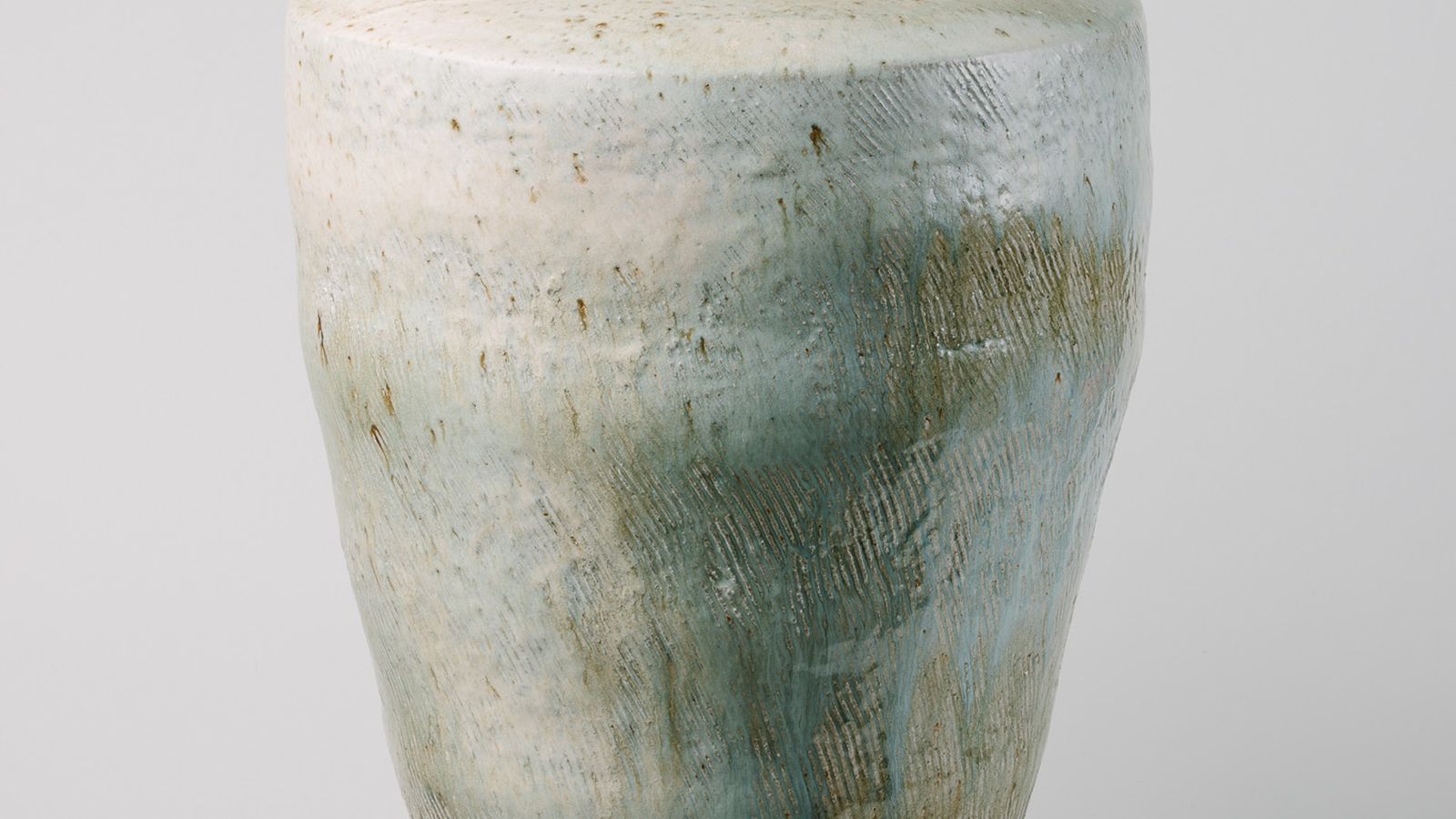Owen Rye

About the artist
Owen Rye (VIC) is a member of the International Academy of Ceramics and a life member of The Australian Ceramics Association. He is known internationally for being at the forefront of the contemporary woodfiring movement. Through his artwork, his writing and his teaching many ceramic artists have been inspired to follow the woodfirer’s path.
Recently for health reasons he has ceased woodfiring and is working with a variety of glazes on stoneware, and photography and sculpture projects.
Completing his doctorate in 1970, the first in Australia in the ceramic arts, he worked with archaeologists at the Smithsonian Institution in Washington DC and the Prehistory Department, ANU. From 1980 he taught ceramics in art schools for 25 years, at the Canberra School of Art and then at Monash University Gippsland, there mainly supervising postgraduate students. About 80 of them graduated.
His teaching has included giving workshops on woodfiring in Australia, the USA and Europe and many public lectures. He has curated woodfire survey exhibitions and he organised the first Australian woodfiring conference in 1986, the precursor to many woodfire conferences and to the Gulgong ceramics events. He retired from art school teaching in 2004.
He has exhibited and is represented in public and private collections in Australia and internationally, including the Australian National Gallery, most state and many regional galleries. His recent artist-in-residency stints were in China, Korea, USA and Australia.
His extensive writing has been published in many ceramics magazines around the world, and he is author of five books including "The Art of Woodfire", published in 2011. The most recent are a memoir, "Beyond Short Street", published by Australian Scholarly; and a book on Palestinian potters; both 2021 publications. He has conducted online and in person workshops on writing.
Artist statement
Exhibition work: Jar 3, 2019, stoneware, woodfired, ash glazes. Collection of Morag Fraser
Any vessel that looks the same from any angle lacks dimension and character and offers nothing more of interest than would a white mug from a two-dollar shop. Three dimensions are only truly present when each slight turn reveals a new perspective, such that a walk around it invites another walk around it. Many pots for the price of one, I say. Looking at the other, vertical dimension, a smaller foot and larger top suggests instability, necessitating awareness lest it be toppled. Made of stone, but delicate, fragile. Ceramic.
Grand jars have always existed –in the palace of Versailles, made in Sèvres; or Chinese porcelain in the White House. A grand jar can set the tone of a grand room; or fill and overshadow a small one. In the singular they create a space around them like some kind of force field - enter that and you are in their presence and other surroundings fade away.
On Sawyers Hill, near Kiandra, not far from where I grew up and one of my favourite places in the world, is a stand of giant mountain ash – or was, before fires consumed them. Seeing an exhibition some years ago of my large jars, being among them, all gathered together for just once, transported me home.
Image: Owen Rye, Jar 3, 2019, stoneware, woodfired, ash glazes. Collection of Morag Fraser. Photo: Andrew Northover.


